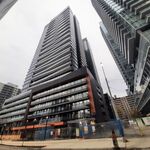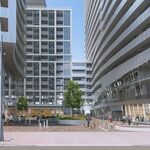NoahB
Active Member
Absolutely. The full space we have to work with is about 150m. Plenty of room.
You could have a train built out of 2 Alstom Citadis Spirit 5 module 59m cars (these are even bigger than the Ottawa ones) and a middle 3 module 30m car. For a total length of 150m and a passenger crush load capacity of 930 people. Almost 1000 people per train.
Or, Alstom could be spec'd to simply build a special 13 module car. But that would require special design and a new maintenance and storage facility. I think 930 people per train is good enough haha.
The new elevated/tunneled replacement would be built to the same length of course.
The planning documents state that 90m is the "ultimate" platform length. This probably means that the platforms cant be lengthed to the station box's limits because you would need to demolish important station service rooms.
I don't have enough details to know for sure. (and I'm certainly not an engineer)





/cloudfront-us-east-1.images.arcpublishing.com/tgam/VFD4BQZVF5P55HHQOBHRBMXCEU.JPG)